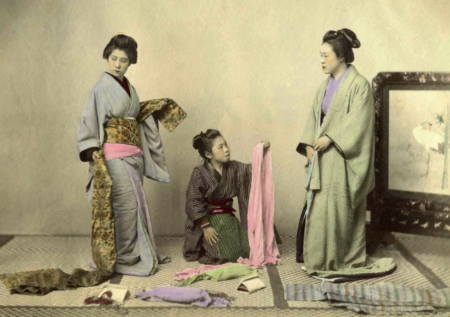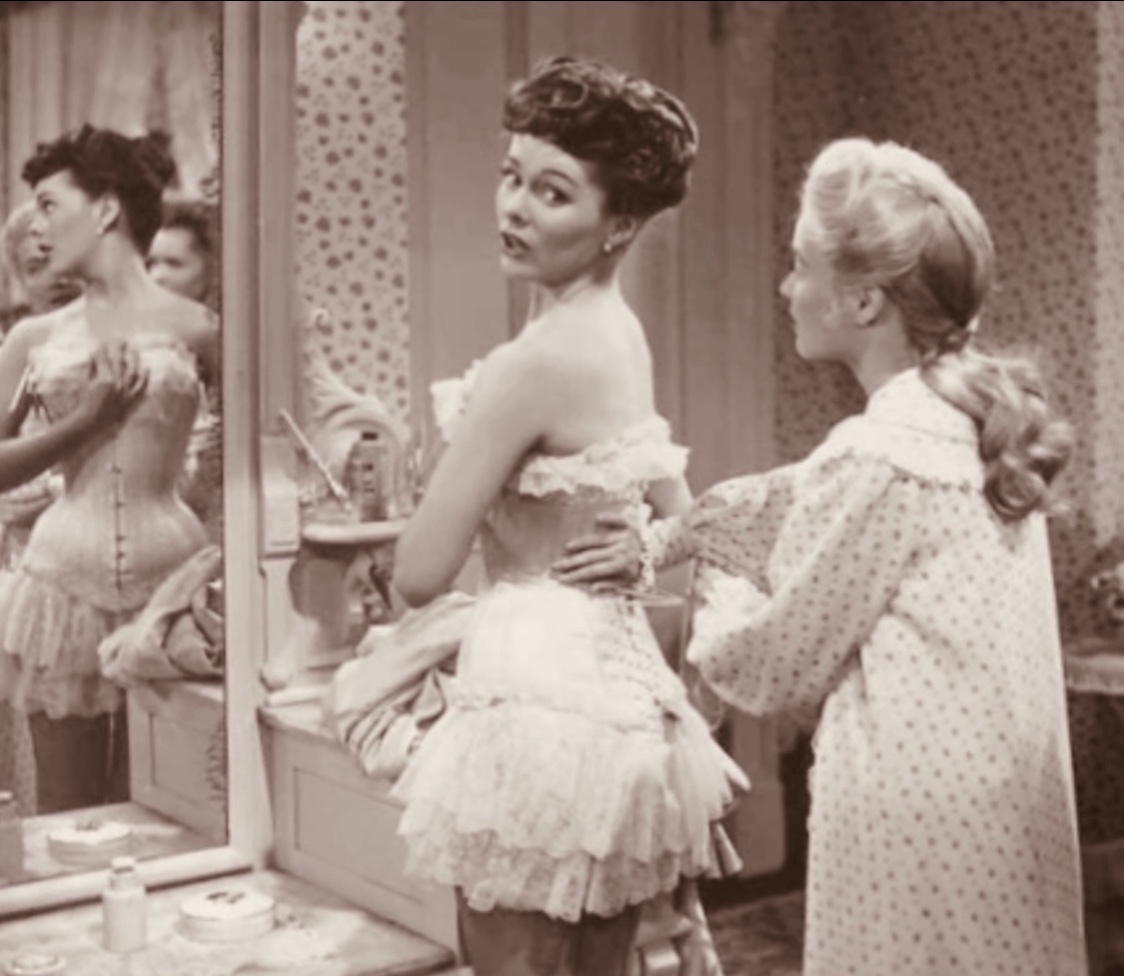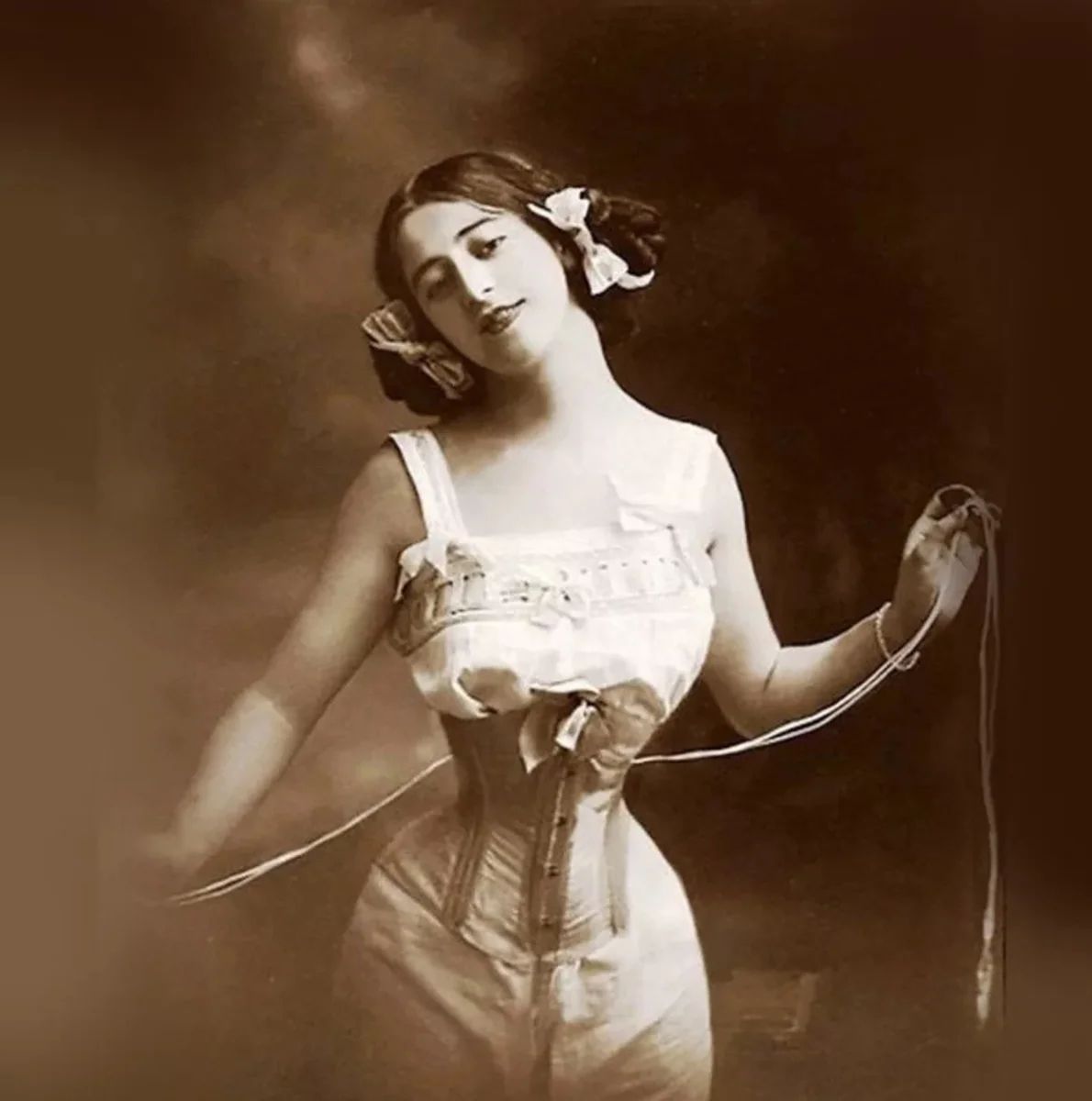What is it an Obi?
An Obi is a richly decorative brocade woven fabric worn around the waist to close a Kimono.
However, about 400 years ago, the Obi were just thin strings without any significant differences between man and woman.
The width of the Obi became a little wider in the beginning of the Edo period (around 1600) and became as it is today in the middle of the Edo period (around 1700).
At the time, Kabuki, the traditional Japanese drama was becoming popular among people. Since there were only male actors performing, they started to emphasise the femininity by wearing thick and gorgeous Obis when there were playing female roles.
The widths of the Obi became gradually wider and wider till reaching 30 centimetres. It was during that period that the Obi became a prominent part of the Japanese dress, often considered as important as the Kimono itself particularly when richly decorated.

The material used to make Obi were mostly silk, velvet, damask fabric or Chinese brocade and they ere always embellished with luxurious and colourful patterns with flowers, animals or any kind of natural or geometric subjects.
Carps are popular symbols in Japan not only because they swim against the current but, accordingly to the legends, they are able to transform themselves into divine creatures.
They symbolise courage like the dragonflies. Conversely, butterflies and Cranes represent longevity. Cranes are popular motifs for bridal garments.
There are many types of Obi for women, certain types of obi can be worn only with certain types of Kimono and on certain occasions.
The Obi can determine the formality of the entire Kimono outfit, so the same kimono can be worn on different occasions, formal or informal, depending on the Obi worn with it.
Women’s Obi In scale:
1. Tsuke Obi
2. Hanhaba Obi
3. Nagoya Obi
4. Fukuro Obi
5. Maru Obi
To make a corset from an Obi we are limited by the width of the fabric, so we can take in consideration only the Fukuro Obi and the Maru Obi.

Fukuro Obi (袋帯, “pouch obi”) are slightly less formal than maru obi, despite being the most formal variety of Obi worn today.
Fukuro Obi are made from either a single double-length of fabric on fold with a seam down one edge or from two lengths of fabric sewn together down each edge.
Fukuro Obi are roughly 30 cm wide and from 360 cm to 450 cm long.
When worn, a Fukuro Obi is nearly impossible to tell from a Maru Obi.
Maru Obi (丸帯,”one-piece obi”) are the most formal type of women’s Obi, but obsolete today. They are made from about 68 cm wideband folded around a double lining and sewn together.
Maru Obi were at the their most popular during the Taisho and Maiji periods.
Their bulk and weight make them difficult to tie and are worn only by Maiko (Geisha apprentices) and brides.
Maru Obi are about 30 cm to 35 cm wide and 360 cm to 450 cm long, fully patterned and they are often embroidered with gold or silver coated yarn and foilwork.
Over the years the decorativeness of Obi was dramatically improved and a number of specialists, around Kyoto, started to produce marvelous Obi, known nowadays for their craftsmanship and reputation of quality all over the world.
The word “Obi” comes from the old Japanese word “Obu” which means “to wear”. In fact, at the beginning the Obi was just an item to wear a Kimono.
Nowadays the Obi has become an essential part of the traditional female dress and represents the attention to make things beautifully and meaningfully typical of the Japanese culture.
–
–
Pictures from:
1. Okinawa Soba (Rob) on Flickr;
2. Male Actor Playing a Woman, c1704-c1711by Torii Kiyonobu from the Met’s archive;
3. Wikipedia.



